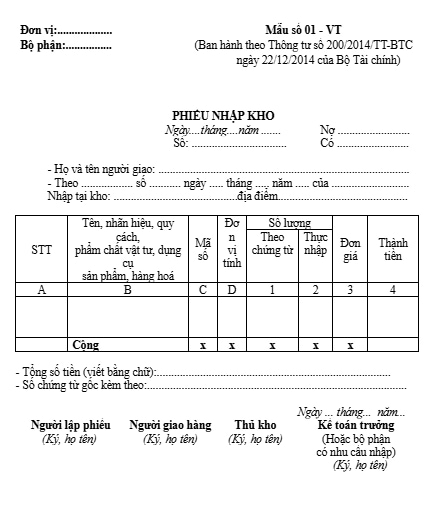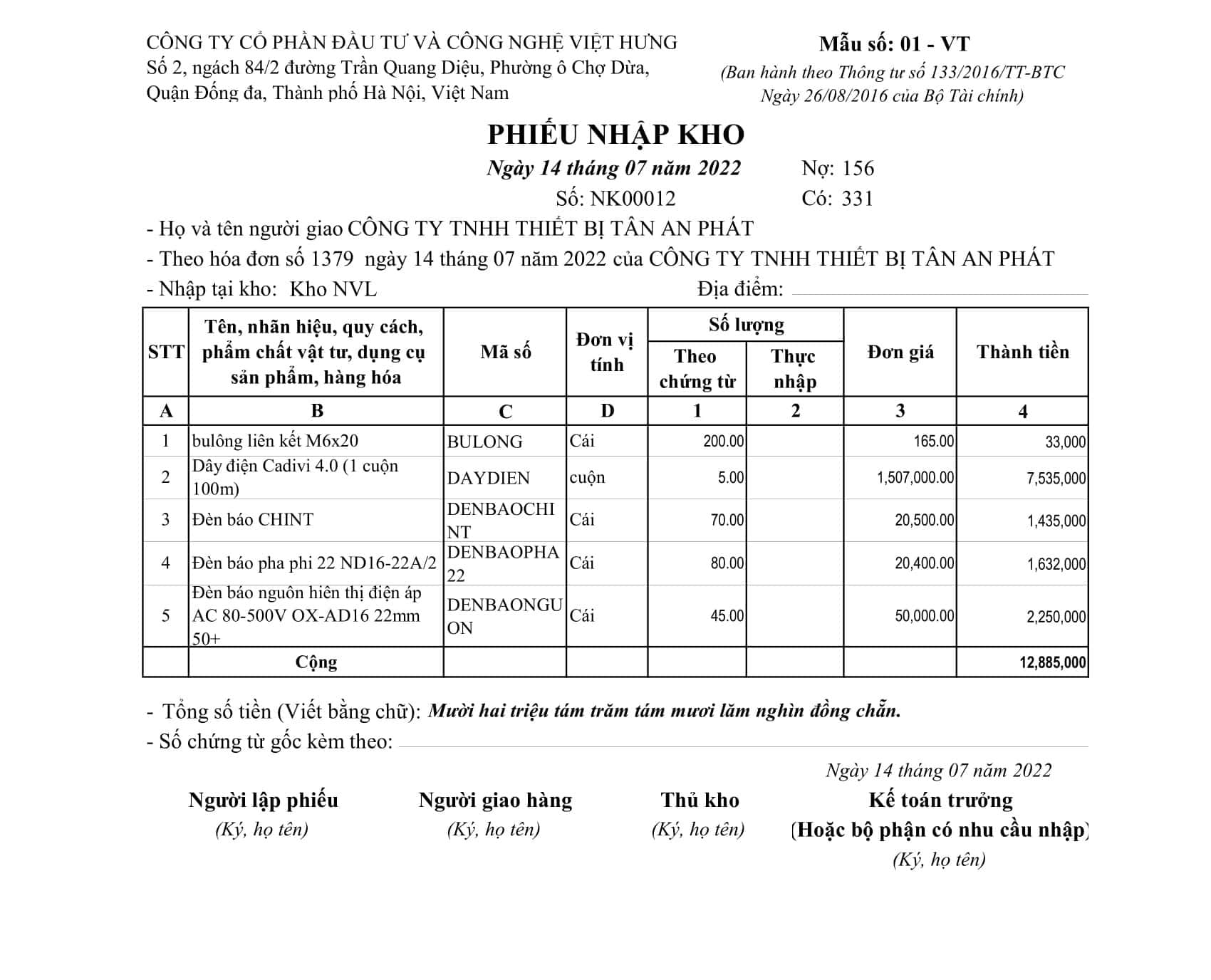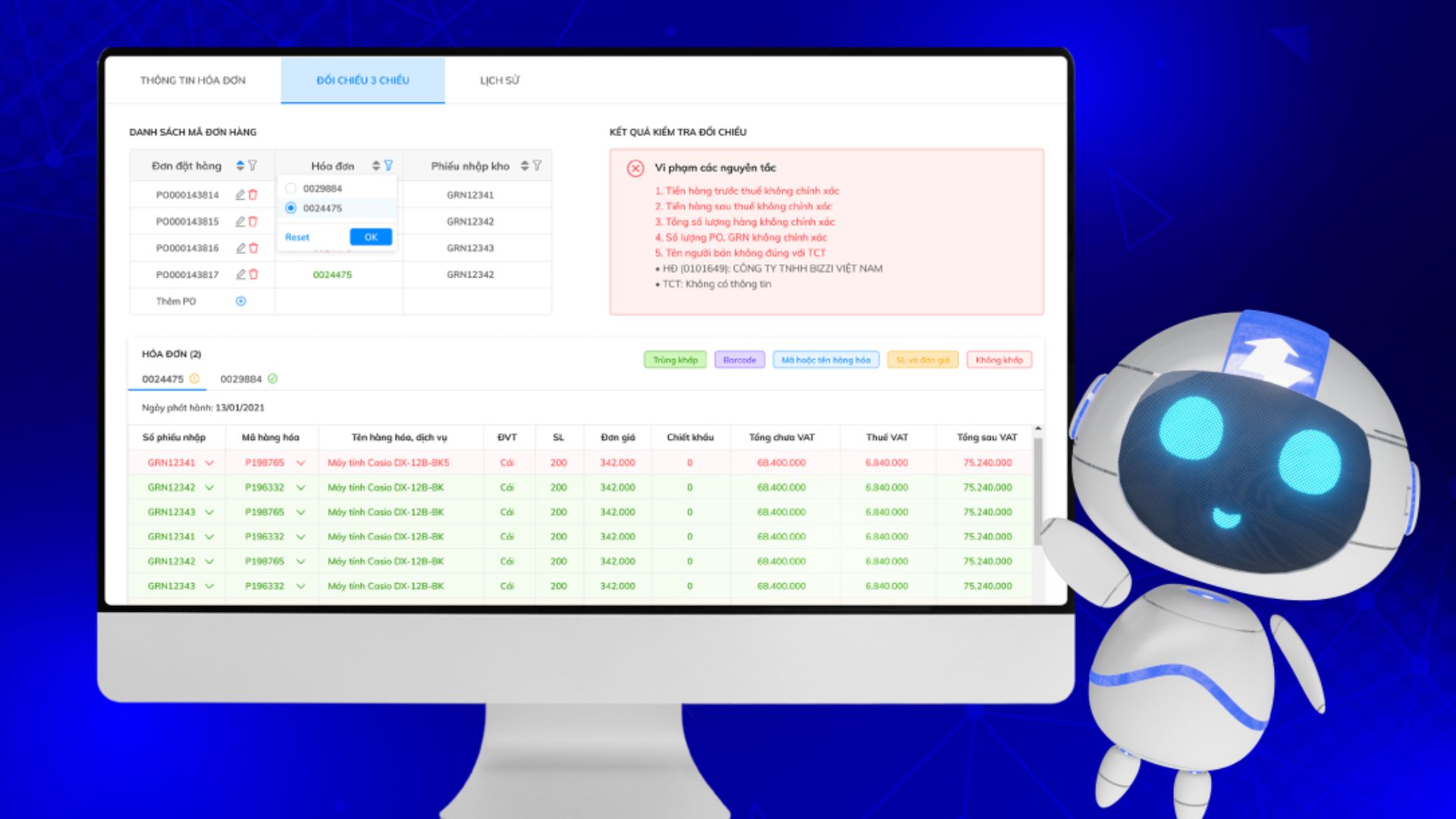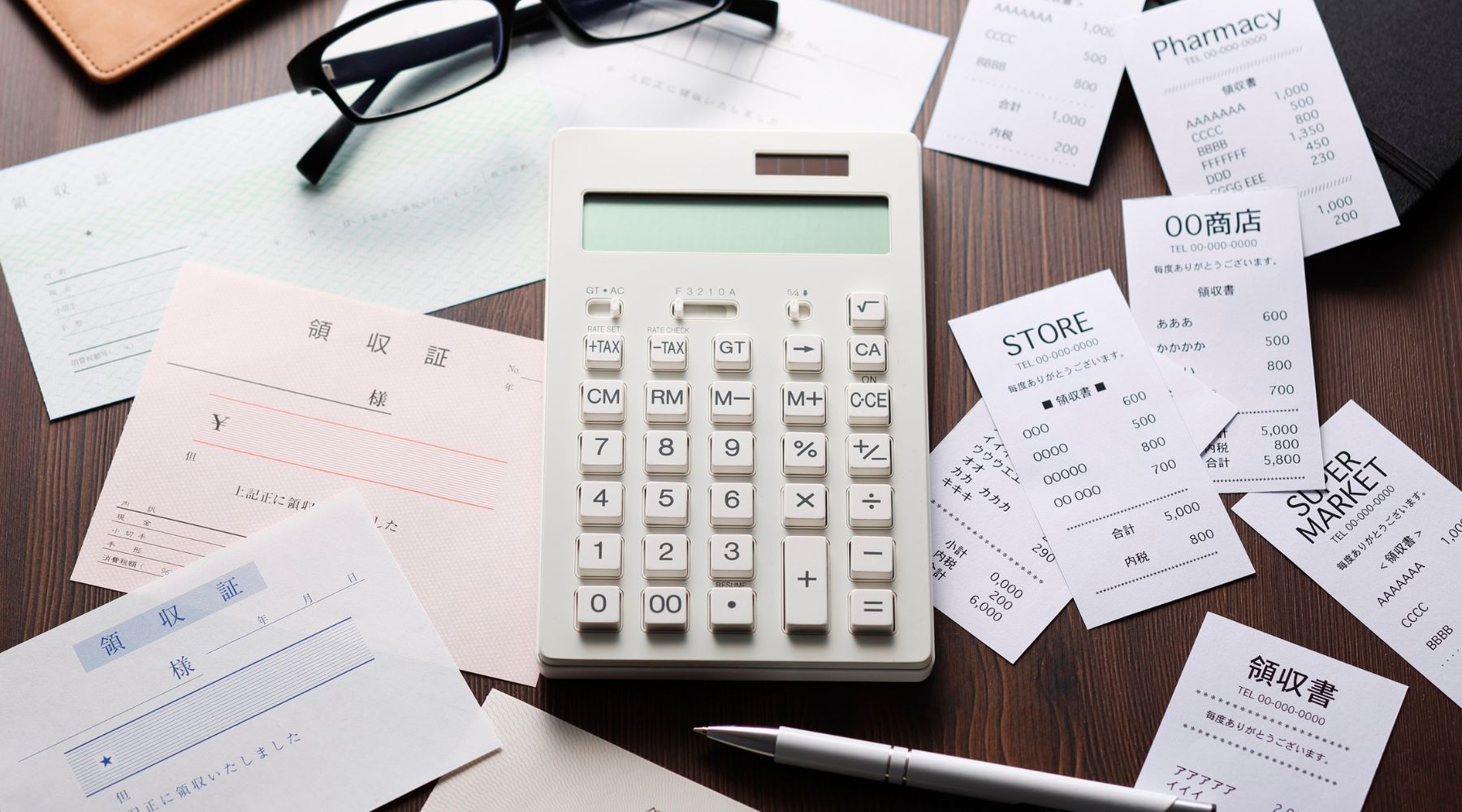Efficient warehouse management is an important factor in business operations, especially when goods are constantly coming in and out. What is a warehouse receipt? This is an accounting document used to record information about goods brought into the warehouse, helping to control the exact quantity and value of assets. However, manual processes are prone to errors and waste time. Bizzi - a financial - accounting AI assistant with more than 30 integrated features - provides an automation solution to help businesses process warehouse receipts quickly, transparently and more effectively.
1. What is a warehouse receipt?
1.1. Concept of warehouse receipt
What is a warehouse receipt? This is an important accounting document, created when a business receives goods, materials, tools, equipment, etc. from outside or self-produced to be stored in the warehouse. The warehouse receipt reflects the detailed quantity, type and origin of the goods, and also acts as a basis for tracking the fluctuations of assets in the warehouse over time.
This document usually comes with bill, delivery notes or orders, helping businesses control the warehousing process transparently and accurately.
1.2. Purpose and uses
Warehouse receipts not only serve accounting purposes, but also bring many practical benefits in goods management:
- Basis for accounting and warehouse management: Help accountants with bookkeeping, warehouse keepers update warehouse cards, and support payments to suppliers.
- Effective inventory control: Accurately record the quantity of imported goods to avoid loss and errors in inventory.
- Easy access and checking: In case of dispute or discrepancy, the warehouse receipt is the legal basis for comparison and handling.
- Support production and business planning: Based on inventory data, businesses can plan purchases, production, and distribution to suit actual needs.
- Integrating digital processes: Warehouse receipts can be digitized and integrated into accounting management software like Bizzi, saving time and increasing accuracy.
1.3. Basic warehouse receipt creation process
The process of creating a warehouse receipt must follow certain steps to ensure validity and completeness of information:
- Step 1: When the goods are brought to the warehouse, the accountant or warehouse keeper will check the actual quantity and quality, then proceed to make a warehouse receipt.
- Step 2: Vouchers are usually made up of 02 to 03 copies depending on internal procedures:
- Link 1: Save at the place where the voucher is created (accounting department).
- Link 2: Give to the warehouse keeper to update the warehouse card.
- Link 3: Deliver to the delivery party as proof of delivery.
- Step 3: The voucher must have the full signatures of the person who prepared the voucher, the storekeeper, the chief accountant, and the person with approval authority (usually the director or authorized person).
- Step 4: Store and update data into warehouse management system or accounting software for future tracking.
2. Instructions on how to create a Warehouse Receipt according to regulations (Refer to Circular 200/2014/TT-BTC)
Creating a standard warehouse receipt not only helps businesses control inventory effectively but also ensures legality when settling taxes and auditing. Below are detailed instructions on how to create a warehouse receipt according to the form issued at Circular 200/2014/TT-BTC.
2.1. General information on the ticket
Before filling in the content lines, businesses need to ensure that they have filled in all the identification information:
- Name of unit & department using: Clearly state the name of the company and department/office that needs to import goods.
- Voucher number & date: Each warehouse receipt must have its own code for easy comparison, along with the date, month, and year of creation.
- Delivery person: Record the name of the individual or organization handing over the materials.
- Warehouse basis: Specify invoice, contract or warehouse order number.
- Receiving warehouse: Write the correct warehouse name and receiving location to avoid confusion.
- Accounting account: Identify the correct account In debt and Have to record transactions according to accounting principles.

2.2. Instructions for filling in detailed content columns
The main content of the form includes a list of materials, tools, equipment, goods, etc. divided into many columns, each column has its own function:
Columns A, B, C, D: Record in order:
- A: Item number;
- B: Name of materials and goods;
- C: Code, brand, specification, quality;
- D: Unit of measurement (kg, piece, box…).
Column 1 – Quantity according to documents: Record according to purchase invoice or import order (not counted).
Column 2 – Actual quantity imported: The warehouse keeper confirms the actual quantity of goods received after inventory. If there is a difference, the reason must be noted.
Column 3 – Unit price: Accountants record unit prices excluding tax (according to actual purchase price or approved standard price).
Column 4 – Total amount: Calculate by formula: Actual quantity imported x Unit price. The accountant is responsible for calculating and recording.
2.3. Summary and confirmation signature
Complete the warehouse receipt by summarizing and confirming the signature:
“Plus” line: Record the total values in the quantity and amount columns.
“Total amount in words” line: Write the total amount just calculated in words (in Vietnamese without accounting standard accents).
Line “Original document number attached”: Record VAT invoice number, contract, attached list (if any).
Signature required: Including stakeholders:
- The person who prepared the voucher (accountant);
- Delivery person;
- Storekeeper;
- Chief Accountant or person in charge of relevant department;
- Approver (usually the director or authorized person).
Note: Warehouse receipts must be stored with original documents in accounting records for at least 10 years according to the current Accounting Law. The application of digital technology and warehouse management software such as Bizzi Helps businesses create - save - compare warehouse receipts quickly, accurately and save management costs.

3. Common problems in warehouse management and Warehouse Receipts
Warehouse management and stock receipt creation are important processes in accounting and inventory control. However, many businesses still have difficulty standardizing documents, validating data, and reconciling books, leading to errors and financial risks.
- Inventory recording without valid documents: Lack of purchase invoices, delivery notes, or warehouse receipts makes it difficult to prove the origin of goods during audits or tax settlements.
- Confirm and record incorrect inventory cost: Not updating purchasing costs (such as shipping, loading and unloading costs...) or recording provisional prices distorts cost of goods sold and affects financial reports.
- Not regularly reconciling accounting books between the storekeeper and the warehouse accounting: Lack of periodic reconciliation process leads to discrepancies between actual inventory and accounting books, affecting the accuracy of management reports.
- The import - export - inventory summary table is negative or not periodically created.: Failure to closely monitor import and export inventory makes it difficult to control raw materials, especially in manufacturing enterprises.
- Making warehouse receipts at the wrong time or without material inspection records: Slow recording or lack of quality control of materials before entering the warehouse can easily lead to incorrect specifications, affecting production quality.
- Management has not yet established appropriate regulations or standards for material consumption.: Lack of standards causes waste and makes it difficult to control the efficiency of material use, especially when there is no tool to track detailed import - export - inventory data.
- 4. Optimize Warehouse Receipt Management with 3-way reconciliation solution from Bizzi
Manually creating inventory receipts poses many risks — from data errors to lost goods. In medium and large businesses in particular, the purchasing process often involves multiple steps and departments, making it difficult to control without a tight tracking system. This is where 3-Way Matching solution automatically from Bizzi develop power
4.1. What is 3-way comparison?
3-Way Matching (3-way reconciliation) is a control process in purchasing and warehousing management, helping businesses verify the validity of transactions based on the match between:
- The order (Purchase Order – PO)
- Purchase Invoice
- Goods Receipt (GR)
The goal of 3-way matching is to ensure:
- Goods received are correct in type, quantity and unit price according to contract/order.
- Payment invoice matches the value of goods actually received.
- Transparent transactions, complete documents for accounting and auditing.
4.2. Bizzi – Smart 3D reconciliation automation solution
Bizzi provides technology Smart 3D Auto Matching, directly integrated with the enterprise's accounting and financial system, making the warehouse receipt processing process more accurate and transparent:
- Automated reconciliation with accuracy above 99%
- Handles all complex reconciliation cases: 1PO – 1INV – 1GR; 1PO – nINV – nGR; nPO – 1INV – nGR; nPO – nINV – nGR
- Rapid error detection: Easily identify differences in quantity, unit price, or document information for timely handling, minimizing the risk of lost goods or cost discrepancies.
- Automate PO and invoice information retrieval: Bizzi automatically recognizes and extracts information from electronic invoices, supplier emails or attachments, synchronizing data between purchasing - accounting - logistics departments.
- Support transaction lifecycle control: From ordering, receiving, warehousing to paying bills – all information is connected and reconciled throughout a single platform.

4.3. Outstanding benefits when applying Bizzi in warehouse receipt management
Digitizing the warehouse receipt management process with the Bizzi solution brings many practical benefits to businesses, from increasing data accuracy to optimizing overall operational efficiency.
- Minimize errors and fraud in warehousing.
- Ensure documents are always complete and accurate when settling taxes and auditing.
- Save time, reduce operating costs and control personnel.
- Help businesses standardize warehouse management - accounting - finance processes.
To improve the efficiency of invoice management as well as automate the financial and accounting processes of the business. Register to experience Bizzi's comprehensive solution suite today!
- Link to register for a trial of Bizzi products: https://bizzi.vn/dang-ky-dung-thu/
- Schedule a demo: https://bizzi.vn/dat-lich-demo/
Conclude
Effective warehouse management not only helps control goods but also contributes to optimizing costs and operations. Understanding What is a warehouse receipt? and applying automation technology like Bizzi will help businesses minimize errors, save time and improve processing efficiency. With a smart integration platform, Bizzi is a reliable solution for managing warehouse receipts effectively, transparently and accurately.


